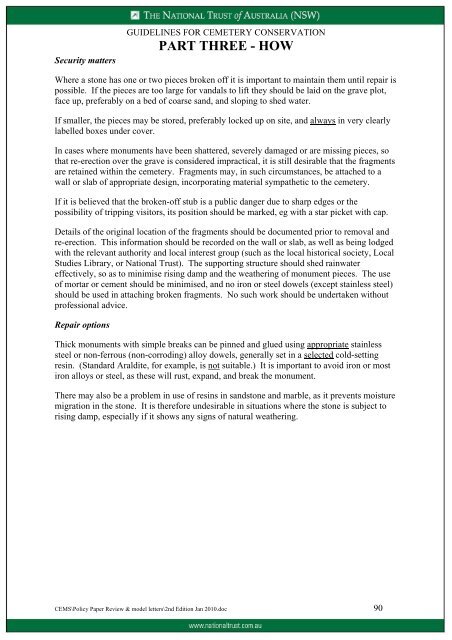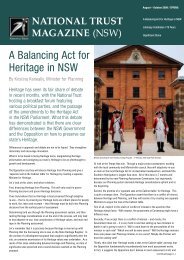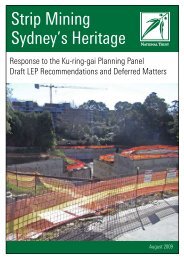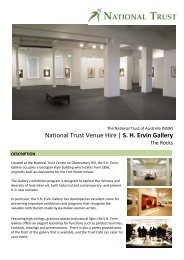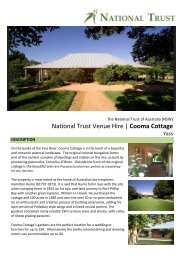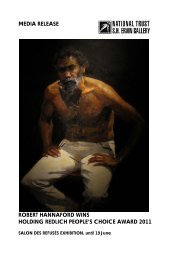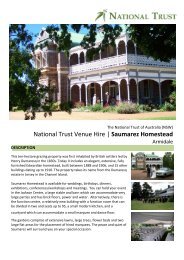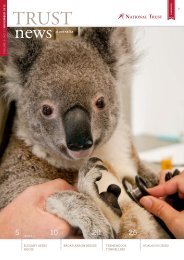Guidelines for Cemetery Conservation - National Trust of Australia
Guidelines for Cemetery Conservation - National Trust of Australia
Guidelines for Cemetery Conservation - National Trust of Australia
Create successful ePaper yourself
Turn your PDF publications into a flip-book with our unique Google optimized e-Paper software.
Security matters<br />
GUIDELINES FOR CEMETERY CONSERVATION<br />
PART THREE - HOW<br />
Where a stone has one or two pieces broken <strong>of</strong>f it is important to maintain them until repair is<br />
possible. If the pieces are too large <strong>for</strong> vandals to lift they should be laid on the grave plot,<br />
face up, preferably on a bed <strong>of</strong> coarse sand, and sloping to shed water.<br />
If smaller, the pieces may be stored, preferably locked up on site, and always in very clearly<br />
labelled boxes under cover.<br />
In cases where monuments have been shattered, severely damaged or are missing pieces, so<br />
that re-erection over the grave is considered impractical, it is still desirable that the fragments<br />
are retained within the cemetery. Fragments may, in such circumstances, be attached to a<br />
wall or slab <strong>of</strong> appropriate design, incorporating material sympathetic to the cemetery.<br />
If it is believed that the broken-<strong>of</strong>f stub is a public danger due to sharp edges or the<br />
possibility <strong>of</strong> tripping visitors, its position should be marked, eg with a star picket with cap.<br />
Details <strong>of</strong> the original location <strong>of</strong> the fragments should be documented prior to removal and<br />
re-erection. This in<strong>for</strong>mation should be recorded on the wall or slab, as well as being lodged<br />
with the relevant authority and local interest group (such as the local historical society, Local<br />
Studies Library, or <strong>National</strong> <strong>Trust</strong>). The supporting structure should shed rainwater<br />
effectively, so as to minimise rising damp and the weathering <strong>of</strong> monument pieces. The use<br />
<strong>of</strong> mortar or cement should be minimised, and no iron or steel dowels (except stainless steel)<br />
should be used in attaching broken fragments. No such work should be undertaken without<br />
pr<strong>of</strong>essional advice.<br />
Repair options<br />
Thick monuments with simple breaks can be pinned and glued using appropriate stainless<br />
steel or non-ferrous (non-corroding) alloy dowels, generally set in a selected cold-setting<br />
resin. (Standard Araldite, <strong>for</strong> example, is not suitable.) It is important to avoid iron or most<br />
iron alloys or steel, as these will rust, expand, and break the monument.<br />
There may also be a problem in use <strong>of</strong> resins in sandstone and marble, as it prevents moisture<br />
migration in the stone. It is there<strong>for</strong>e undesirable in situations where the stone is subject to<br />
rising damp, especially if it shows any signs <strong>of</strong> natural weathering.<br />
CEMS\Policy Paper Review & model letters\2nd Edition Jan 2010.doc 90


